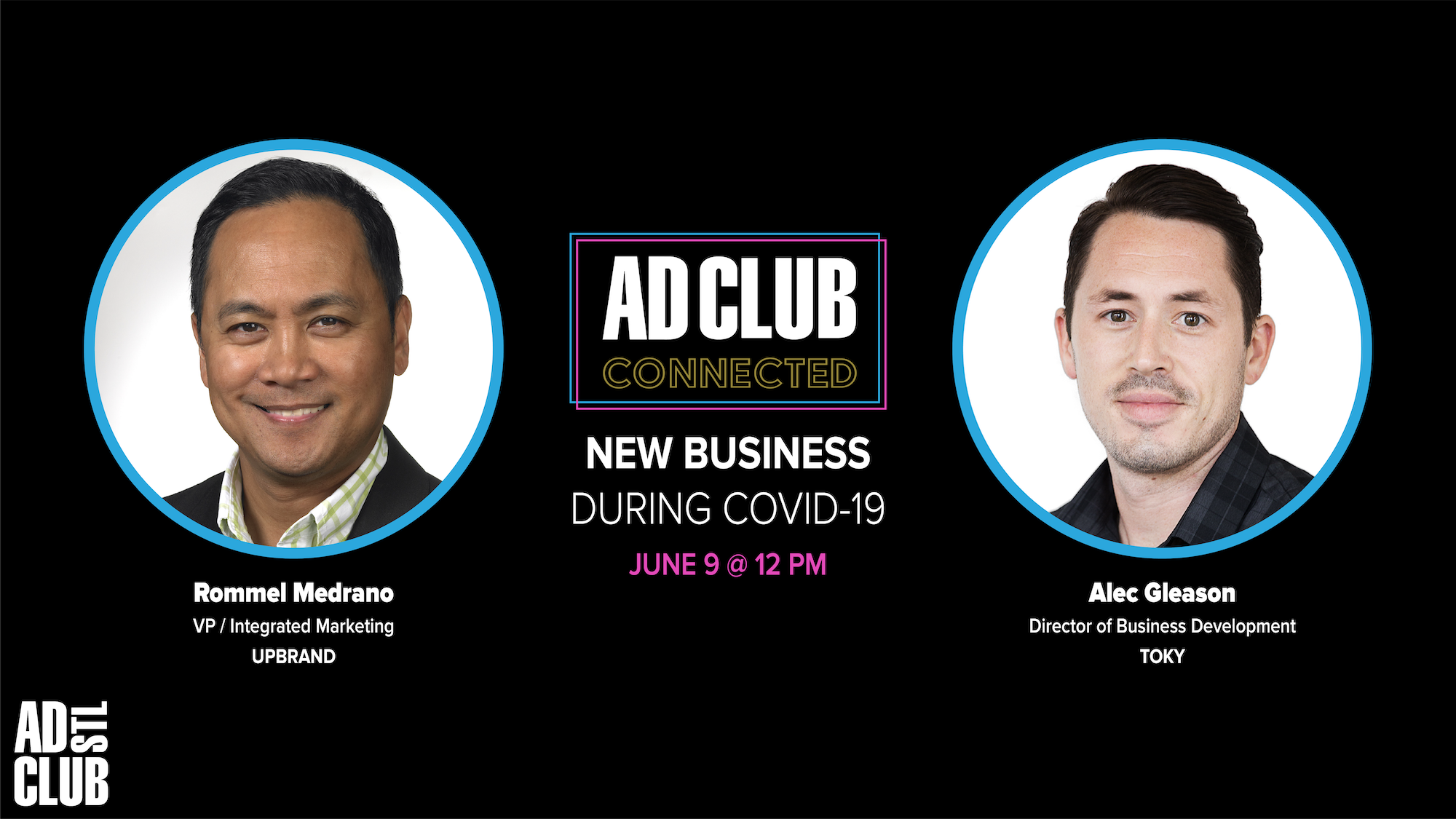3 Tips for Business Development During a Global Pandemic

Recently, I was asked by Ad Club of St. Louis to participate in a short webinar session to share my views on business development for agencies during these crazy times.
Joined by UPBrand’s Vice President of Integrated Marketing, Rommel Medrano, we answered a variety of questions in hopes of shedding some light on what we’re both experiencing on the new business front and perhaps what others can expect to see in the market moving forward.

It was a fun, lighthearted discussion that I hope provided some useful insights to attendees, but as the session concluded I had the nagging thought that we’d only scratched the surface of what some people likely tuned in to hear. I wanted to share a few additional thoughts on three key things I believe firm leaders need to be practicing right now in order to accelerate growth in their new business efforts.
#1: Keep your friends close and your clients closer.
It should go without saying that in times of uncertainty the number one way any team is likely to secure new projects will be through their pre-established client relationships. Therefore, if anyone reading this has not checked in with each and every one of their existing clients individually, shut off the computer, pick up the phone, and start making the calls. Right. Now.
If you’ve established a solid level of trust in the past, it should be easy for you to pick up where you left off. Make a point to inquire about changes their team is making both internally and operationally in case either scenario could open the door to opportunities to re-engage your team.
Right now, in particular, there are a number of groups that had to make the tough call to furlough full-time marketing staff, which could open the door to some low-hanging project opportunities they’ll need help producing. I understand that some of you may consider this an insensitive suggestion, but the fact remains that the work will need to get done if the business is going to have any chance of hiring these people back. Therefore, in this instance, I believe being an opportunist is akin to being a good partner. Also, ask about their own clients and changes they could be experiencing in case you can help alleviate some of their pain points as well.
More than anything, the underlying tone of these conversations should always be to position yourself (and your firm) as someone who is willing to do whatever they can to help. Even if that help means introducing them to someone outside of your own team’s service capabilities, which leads me to my next point.
#2: Help expand your client’s own partner network.
It may seem counterproductive to some but providing referrals and leads to other groups within your network can be an amazing way to grow your own sales pipeline. For reasons I won’t get into here, it is my personal opinion that no one agency can (or should) be an all-encompassing service provider, and therefore it would behoove you to grow a trusted partner network you can lean on to help fill in any service gaps that may exist outside your own firm’s capabilities.
Obviously, in this model, it’s imperative that the people you bring into your network are not only experts in their respective fields, but that they also share a similar mindset in terms of client service since any referral you provide will be a direct reflection on your team. Find the partners that you’d trust not only to do an amazing job but also to treat the client as you would. Make it clear that you’ll be following up after the fact to ensure the experience lived up to everyone’s expectations.
In these partner discussions, be upfront about how you’d envision the partnership evolving over time to ensure that the reciprocity of referrals is indeed a two-way street. Clients are not negotiating chips, and there’s no guarantee that because you make an introduction for someone that this favor will be immediately paid in-kind; however, there can (and should) be an understanding between both parties as to the long-term expectations of the relationship.
If this model is applied appropriately you can not only be a greater resource to your clients and partners but you will actually be the tie that binds the whole network together, which is sure to help keep your name top of mind when future opportunities and referrals present themselves!
#3: Wise use of social media to grow your network reach.
If you’re like most of us, right now you probably can’t hit “delete” fast enough on your weekly Screen Time report because it immediately reminds you of how much time you’ve sent down the social media drain that week. However, for socially savvy business development pros, this trend also presents a unique opportunity to gain some high-value exposure and potentially re-energize your new opportunities pipeline.
Right now, LinkedIn is still the best platform for pure business development and networking purposes, but it’s likely that those of you reading this have yet to truly experience the power this platform can provide. Like any social strategy, growing your network and reach on LinkedIn takes work (AKA time), but for most firm leaders it can be an impossible task to weave this type of effort into one’s day.
Most people I’ve spoken with have stuck a toe in the LinkedIn waters by sending a few invitations to connect with prospects or colleagues, or maybe they’ve gone so far as to share some thoughts or expertise in a post on the homepage. However, a surprising number of these folks felt that the ROI for the effort did not justify making it a dedicated practice; instead, some have chosen to task other team members or hire third-party teams to manage their accounts. I’m here to tell you this is the WORST way possible to utilize the platform!
As LinkedIn has continued to grow, so too have the number of fake accounts and “bots” on the platform. Therefore, any generic message you send or ambiguous story you choose to post opens the door to you being lumped in with these other imposter accounts, and those are impossible waters for any business developer to swim in. Plus, to state the obvious, we work in creative services, people, and if your posts or outreach efforts are not creative themselves why in the world should I as the recipient trust that you can deliver on anything you say you can?!
Instead, take the proactive approach and actually research the people/companies you wish to engage and craft a personal note as to why you wish to add that person to your network. Be honest, authentic, and genuinely try to add value to this individual’s role.
If you’re posting some thought leadership, take the time to target it toward the audiences you want it to reach. Tag the people, industries, or even the brands themselves you’re trying to attract. Pose a theory and ask other thought leaders to weigh in to form some dialog around the topic, which will in turn expose that content to their own networks and followers.
Take a risk, but do so respectfully, creatively, and consistently, and I can guarantee you’ll have better results as compared to handing this work off to someone else.
—
These are only a few of the strategies I personally use to help grow our new business efforts at TOKY, but by no means is this all I could share on the topic. So, consider it an open invitation to anyone reading this, if you have questions or would like to discuss BD strategies for creative service firms, reach out on LinkedIn and let’s chat. Just don’t send a generic message otherwise I can promise you it will fall on deaf ears!
Thanks for reading and happy hunting.